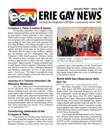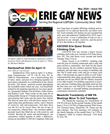Mapping the Complex and Confusing Patchwork of Parentage Laws
Families are made in all kinds of ways, and this is true for both LGBTQ and non-LGBTQ families. Unfortunately, state laws establishing parentage - i.e., the legal recognition of a parent-child relationship - have not kept up with the varied ways that families form.
Parentage plays a huge part in healthcare decisions, school settings, economic security, and other parts of everyday life, and it's important that policy recognizes different kinds of families so that they can be equally protected.
Some states have inclusive parentage laws in place, but navigating today's parentage landscape can be really confusing. MAP has released a brand-new set of Equality Maps and supplemental resources that help introduce these laws and reflect the ways states are updating their parentage laws to reflect today's families.
What our maps track
This collection of new and updated Equality Maps includes several laws that establish pathways to parentage for children, especially those born to LGBTQ parents, such as:
- Voluntary acknowledgment of parentage (VAP)
- Adoption
- Assisted reproduction
- "Functional parent doctrines"
- Marital presumption
Why is parentage relevant now?
In many states, parentage laws are out of date. In fact, the current patchwork of parentage laws across the country - many of which haven't been updated in decades - leaves LGBTQ parents and their children vulnerable. Nearly 1 in 3 LGBTQ adults in the U.S. are raising children under the age of 18, many of them in states that still have outdated laws. This means that far too many LGBTQ parents' legal connections to their children are potentially at risk.
Additionally, the way we talk about parentage often centers around married parents, but it's important that all children have access to parentage regardless of whether their parents are married or not.
Fortunately, in many states, there are multiple pathways to parentage. Like different tools in a toolbox, sometimes one option is better than another for securing parentage, given a particular family's situation. Sometimes a family might use several tools. It's important to highlight each of these emerging options so that families of all kinds - and in all states - can understand different pathways to legal recognition of their parent-child relationships.
Importantly, these maps are intended as a starting point for information, but they are not legal advice. Readers are strongly encouraged to consult a lawyer or work with legal advocates to help decide what is best for their family and in their state
Voluntary Acknowledgement of Parentage (VAP)
For most children born to unmarried parents, legal recognition of parentage is established through the "voluntary acknowledgment of parentage" (VAP).
This is a legal document typically completed at the hospital at the time of the child's birth. There are no costs associated with it, and once it takes effect, it is the legal equivalent of a court decree of parentage and, under federal law, must be respected across state lines and in all jurisdictions.
However, in many states, only men who are believed to be the genetic father of the child in question are permitted to sign VAPs. As a result, many LGBTQ families face obstacles to this pathway to parental recognition.
Now, a growing number of states are updating their parenting laws to ensure that any parent - regardless of their marital status, gender, sexual orientation, or genetic relationship to the child - can sign a VAP and have their parental relationship legally recognized and protected.
Adoption
There are multiple types of adoption that can either establish a legal relationship between parent and child, formally confirm such a relationship, or both.
This Equality Map displays three types of adoption:
- Stepparent adoption is available in every state to someone who is married to a child's legal parent. As a result of marriage equality, this type of adoption is available to married same-sex couples nationwide.
- A co-parent or second-parent adoption is available in some, but not all, states, and it does not require the parents to be married.
- Separately, a confirmatory adoption is a streamlined adoption process established by law to confirm a parent's existing legal relationship to a child. Click "Citations & More Information" for more details about each of these types of adoption.
Assisted Reproduction
While most states have statutes specifically governing the parentage of children born through assisted reproduction, most of these statutes only apply to married couples.
This map shows the states in which all intended parents, regardless of marital status, can be recognized as legal parents if they consent to assisted reproduction with the intent to parent the child. These laws are often referred to as assisted reproduction statutes or intended parent provisions.
For example, when a woman consents to have a child with her wife through donor insemination, the non-gestational, non-genetic mother is also a legal parent - just as a woman's husband would be a legal parent of a child they have using donor insemination, even though he is not the genetic father.
Our map shows states that have expanded assisted reproduction statutes to apply regardless of the marital status of the intended parents. Note that this map does not refer to laws governing surrogacy.
Functional Parent Doctrines
This map shows "functional parent doctrines" or policies, reflecting how some states recognize and extend parental rights to a person based on their relationship with a child - even if that person is not genetically and/or legally related to the child.
This can include, for example, a person who helps raise their partner's child, but who is not legally married to their partner or genetically related to their partner's child. These doctrines are also commonly used for people who are related to the child, such as grandparents or other family members.
These doctrines can vary in important ways beyond what is shown on this map, including who qualifies as a functional parent and what potential proof or evidence may be required.
Note: This map is not legal advice, and other rights may exist. Please reach out to legal experts such as the LGBTQ Family Law Institute or legal advocates such as GLAD and NCLR.
Martial Presumption
When a married person gives birth to a child, the person's spouse is also legally recognized as the child's parent. This is called the marital presumption of parentage.
This pathway to parentage is available to all married same-sex couples in the U.S. because the 2015 Supreme Court decision in Obergefell v. Hodges granted the right to marry to same-sex couples nationwide.
For more on current state marriage laws, see MAP's 2022 report: "Underneath Obergefell: A National Patchwork of Marriage Laws."
Today, children come to families in many different ways - including through assisted reproduction, adoption, and more - and this is especially true for LGBTQ families. It is critical to modernize state laws so that the establishment of secure legal ties between parents and children is available to LGBTQ and non-LGBTQ families alike. More inclusive and up-to-date parentage policies are essential to protecting and promoting the health, wellbeing, and stability of children everywhere.
About MAP: MAP's mission is to provide independent and rigorous research, insight and communications that help speed equality and opportunity for all. MAP works to ensure that all people have a fair chance to pursue health and happiness, earn a living, take care of the ones they love, be safe in their communities, and participate in civic life. www.mapresearch.org









